January 13, 2022
Search Results for: office design
January 11, 2022
Great Resignation offers firms a chance to create the Great Retention
by Erin Eatough • Comment, Flexible working, Wellbeing, Working culture
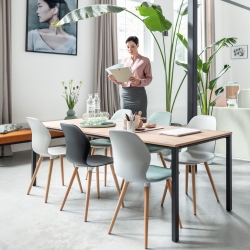 The last 18 months have seen unprecedented change. Covid-19 has forced people to re-evaluate every aspect of their lives, including their career. As a result, we’ve seen a surge in workers taking charge of their careers and leaving their jobs as part of the so-called Great Resignation. Recent data from the ONS shows that there were nearly 1.2 million job vacancies in the UK this quarter, with 15 of 18 sectors reporting record numbers. (more…)
The last 18 months have seen unprecedented change. Covid-19 has forced people to re-evaluate every aspect of their lives, including their career. As a result, we’ve seen a surge in workers taking charge of their careers and leaving their jobs as part of the so-called Great Resignation. Recent data from the ONS shows that there were nearly 1.2 million job vacancies in the UK this quarter, with 15 of 18 sectors reporting record numbers. (more…)
January 10, 2022
People want employers to open up about environmental impact
by Neil Franklin • Environment, News
January 7, 2022
The way we talk about hybrid working can reflect a failure of imagination
by Paul Jervis-Heath • Comment, Flexible working, Workplace design
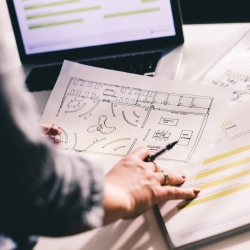 The events of the last 18 months have given us a once in a generation opportunity to reinvent work. Our generation can create a discontinuity between the assumptions of the past and the opportunities of the future. To capitalise on these opportunities though we have to dispense with the assumptions we hold about work and the places where work takes place, including many of the assumptions we hold about hybrid working. We have to re-examine the purpose of the office and what form it might conceivably take in the future before we can decide if it has any place in our plans. (more…)
The events of the last 18 months have given us a once in a generation opportunity to reinvent work. Our generation can create a discontinuity between the assumptions of the past and the opportunities of the future. To capitalise on these opportunities though we have to dispense with the assumptions we hold about work and the places where work takes place, including many of the assumptions we hold about hybrid working. We have to re-examine the purpose of the office and what form it might conceivably take in the future before we can decide if it has any place in our plans. (more…)
January 5, 2022
‘Great Resignation’ offers a one off opportunity to rethink our relationship with work
by Pip White • Comment, Flexible working, Technology, Wellbeing
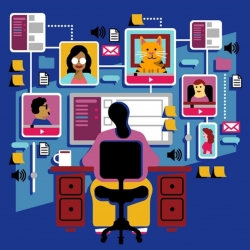 After nearly two turbulent years, which for many knowledge workers have been dominated by a ground-hog day like existence, people are looking for change. This is only natural as workers around the world are re-evaluating their priorities, reigniting their passions, or simply looking for something new. This has led to a mini-exodus from businesses, which is now being dubbed the ‘Great Resignation’. (more…)
After nearly two turbulent years, which for many knowledge workers have been dominated by a ground-hog day like existence, people are looking for change. This is only natural as workers around the world are re-evaluating their priorities, reigniting their passions, or simply looking for something new. This has led to a mini-exodus from businesses, which is now being dubbed the ‘Great Resignation’. (more…)
December 10, 2021
Artificial Intelligence to guide organisations through new challenges
by Jayne Smith • News, Technology
 The World Economic Forum published the “Human-Centred AI for Human Resources: A Toolkit for Human Resources Professionals” to scale the responsible use of artificial intelligence in Human Resources (HR). The toolkit includes a guide covering key topics and steps in the responsible use of AI-based HR tools, and two checklists – one focused on strategic planning and the other on the adoption of a specific tool. (more…)
The World Economic Forum published the “Human-Centred AI for Human Resources: A Toolkit for Human Resources Professionals” to scale the responsible use of artificial intelligence in Human Resources (HR). The toolkit includes a guide covering key topics and steps in the responsible use of AI-based HR tools, and two checklists – one focused on strategic planning and the other on the adoption of a specific tool. (more…)
December 6, 2021
We must wake up to the realities of workplace sustainability
by Oliver Cripps • Comment, Environment, Workplace design
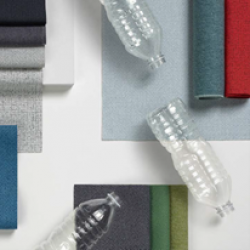 Sustainability has been steadily moving up the business agenda over the past few years, with COP26 placing more emphasis on the need for organisations to demonstrate that their operations are sustainable and lessening their overall impact on the planet. Many businesses may feel daunted by the challenges ahead, and there are certainly big steps that need to be taken in order to reduce corporate carbon footprints and move to more sustainable models. (more…)
Sustainability has been steadily moving up the business agenda over the past few years, with COP26 placing more emphasis on the need for organisations to demonstrate that their operations are sustainable and lessening their overall impact on the planet. Many businesses may feel daunted by the challenges ahead, and there are certainly big steps that need to be taken in order to reduce corporate carbon footprints and move to more sustainable models. (more…)
November 30, 2021
Government publishes Net Zero guidance for buildings
by Neil Franklin • Environment, News, Property
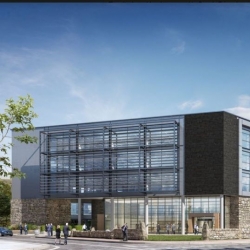 A new guide to decarbonising public sector buildings and creating a net zero public estate has been launched by the Cabinet Office. The authors of The Net Zero Estate Playbook claims it will ensure consistent approaches, such as using solar panels, LED lighting and greener building materials, are applied across public buildings as they help decarbonise Britain’s largest property portfolio. (more…)
A new guide to decarbonising public sector buildings and creating a net zero public estate has been launched by the Cabinet Office. The authors of The Net Zero Estate Playbook claims it will ensure consistent approaches, such as using solar panels, LED lighting and greener building materials, are applied across public buildings as they help decarbonise Britain’s largest property portfolio. (more…)
November 25, 2021
Mindspace raises 72 million dollars from institutional investors
by Freddie Steele • Company news
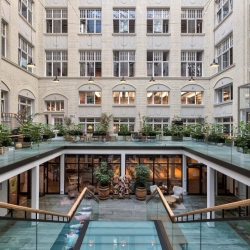 Mindspace, the global flex office provider, secured a funding of $72 million. The investment round is intended to support the continuation of the company’s growth and its further expansion in Europe, the United States and Israel. The round was led by Harel Insurance Investments and Financial Services Ltd., More Provident Funds, Shalom Meckenzie, Arkin Holdings and existing investors. Existing investors include: Yoav Harlap, Kobi Rogovin and Globalworth (GWI:LSE). (more…)
Mindspace, the global flex office provider, secured a funding of $72 million. The investment round is intended to support the continuation of the company’s growth and its further expansion in Europe, the United States and Israel. The round was led by Harel Insurance Investments and Financial Services Ltd., More Provident Funds, Shalom Meckenzie, Arkin Holdings and existing investors. Existing investors include: Yoav Harlap, Kobi Rogovin and Globalworth (GWI:LSE). (more…)
November 24, 2021
Majority of UK workers would choose an employer based on health and wellbeing support
by Jayne Smith • Flexible working, News, Wellbeing
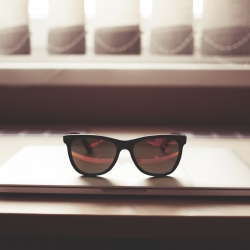 A survey of hybrid-office and home-based UK workers gives insight for employers into some of today’s biggest needs for office workers to carry out their roles. 73 percent of UK workers believe that the provision of ergonomic work conditions, as well as support for their health, will play a bigger role when choosing a company to work for. (more…)
A survey of hybrid-office and home-based UK workers gives insight for employers into some of today’s biggest needs for office workers to carry out their roles. 73 percent of UK workers believe that the provision of ergonomic work conditions, as well as support for their health, will play a bigger role when choosing a company to work for. (more…)
November 24, 2021
More than half of employers feel they don’t know their employees
by Jayne Smith • Business, News, Working culture
 More than half of the nation’s employers (53 percent) feel that they don’t know their employees even slightly well on a personal level, claims a new office worker survey. (more…)
More than half of the nation’s employers (53 percent) feel that they don’t know their employees even slightly well on a personal level, claims a new office worker survey. (more…)





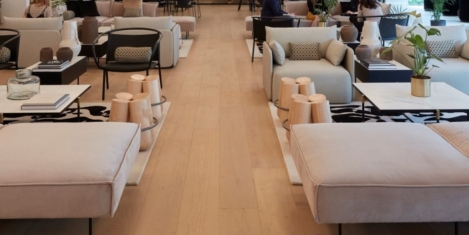
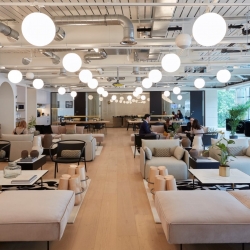 Members of flexible workspace provider
Members of flexible workspace provider 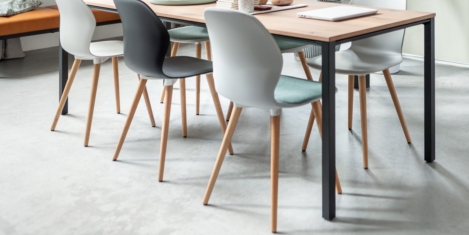

 Research from?
Research from?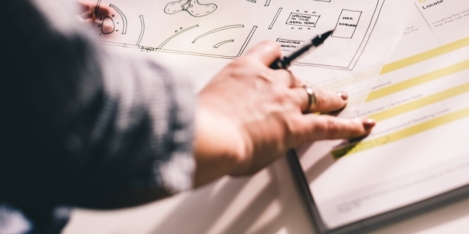
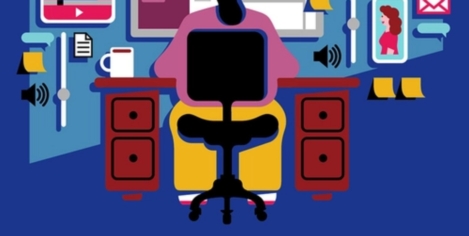


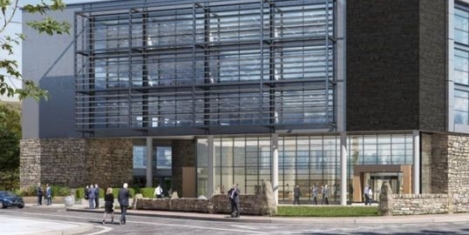
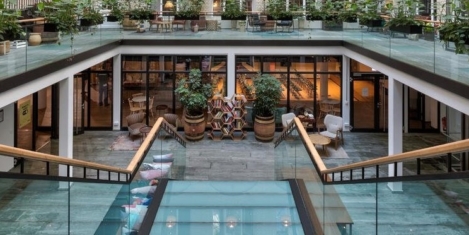
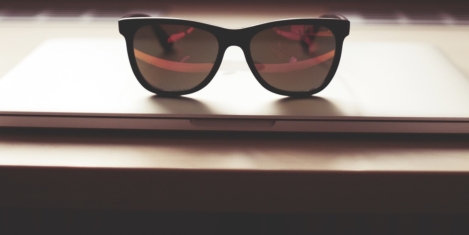
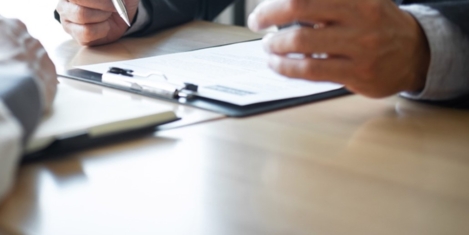









January 12, 2022
Are we witnessing the demise of the knowledge worker?
by Anthony Brown • Comment, Flexible working, Technology, Workplace